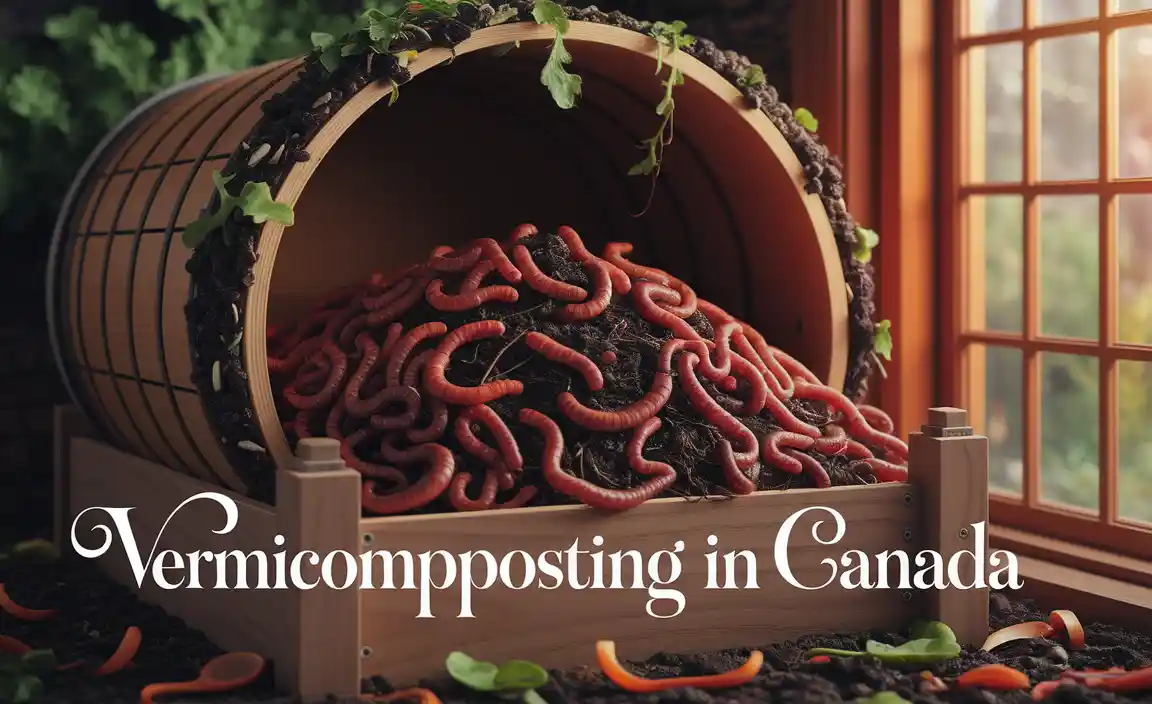Ever looked at your garden and wished for lusher leaves, brighter blooms, or bigger veggies? You might think you need expensive fertilizers or fancy tools, but the real magic often comes from something tiny and free: compost microbes! These hard-working microorganisms are the unsung heroes of healthy soil. If you’re on a budget and want to give your plants a serious boost, learning how to nurture these microbial powerhouses is your ticket to gardening success. Let’s dive into how you can get tons of these essential garden helpers without spending a dime.
What Are Compost Microbes and Why Do They Matter?
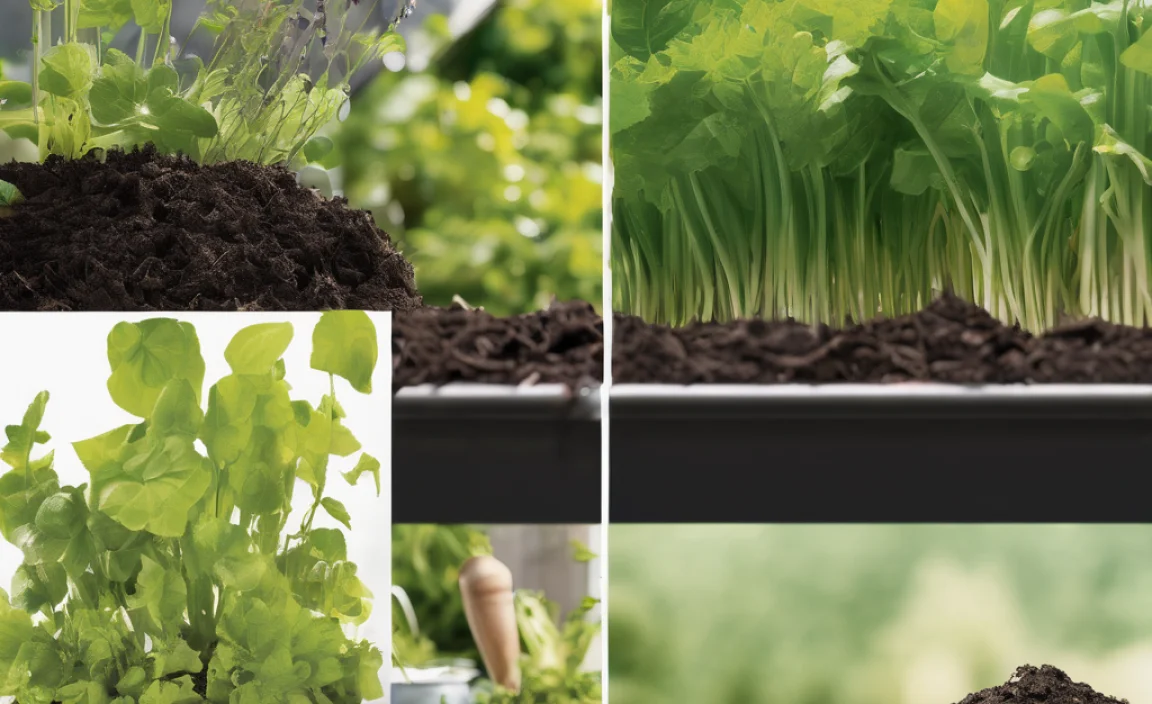
Think of compost microbes as a miniature, bustling city working tirelessly to break down organic matter. This city is made up of bacteria, fungi, protozoa, and other tiny organisms. They are the natural recyclers of our ecosystem. When you compost, you’re essentially creating a buffet for these microbes. They feast on your kitchen scraps and yard waste, transforming them into a rich, dark, earthy substance called humus. Humus is pure gold for your garden!
Why are they so important? Well, these little guys do a lot of heavy lifting:
Nutrient Cycling: They make essential nutrients like nitrogen, phosphorus, and potassium available to your plants in a form they can actually use. Without microbes, even nutrient-rich materials would be locked away.
Soil Structure: Microbes help bind soil particles together, creating better aeration and drainage. This means roots can grow more easily and get the oxygen they need.
Disease Suppression: A thriving microbial community can outcompete harmful pathogens in the soil, helping to keep your plants healthy and disease-free.
Water Retention: Healthy soil, rich in microbial activity, can hold more water, meaning you might need to water your garden less often.
Essentially, compost microbes build fertile soil from the ground up, naturally. They are the engine that drives a healthy garden ecosystem, making your plants stronger and more resilient.
The Myth of Expensive Garden Boosters
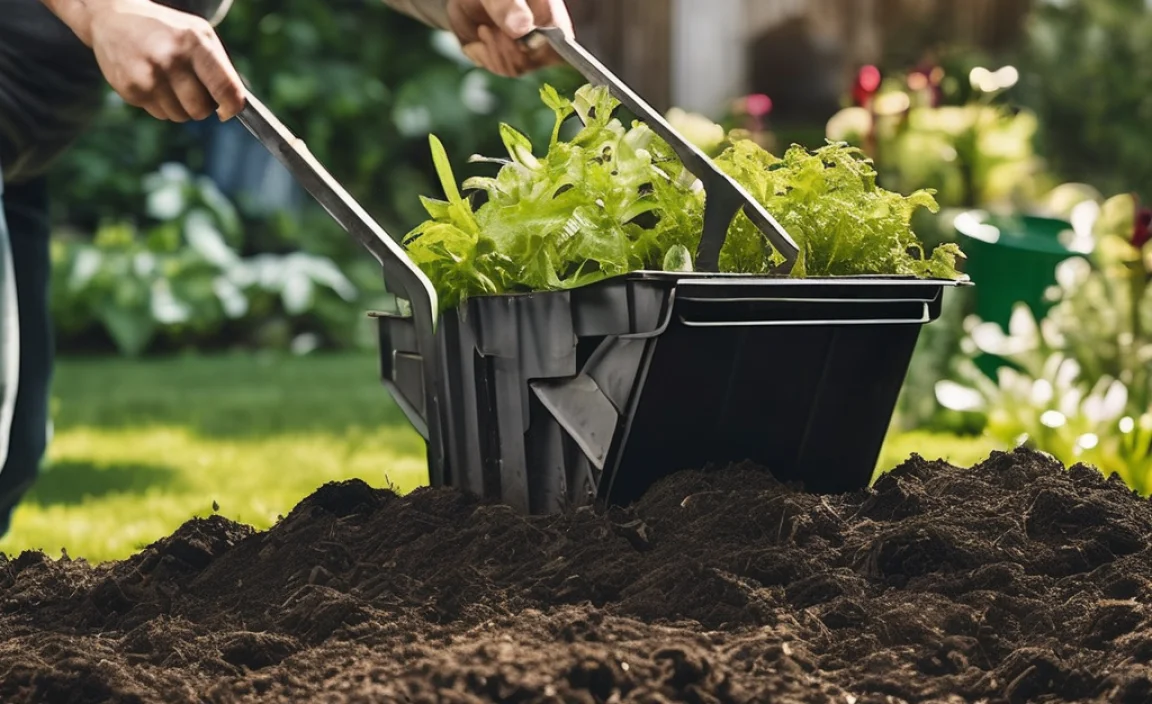
Many gardeners believe they need to buy bags of expensive soil amendments, synthetic fertilizers, or specialized microbial inoculants to get great results. While some products can be helpful, they often come with a hefty price tag. The truth is, nature provides us with everything we need! You don’t need to be a soil scientist or have a deep pocket to cultivate a microbe-rich garden.
The most effective way to boost your garden is to focus on creating the perfect environment for the existing microbes in your soil and the ones you can easily introduce through composting. This approach is not only budget-friendly but also much better for the long-term health of your soil and the environment.
Composting: Your Free Source of Microbial Power
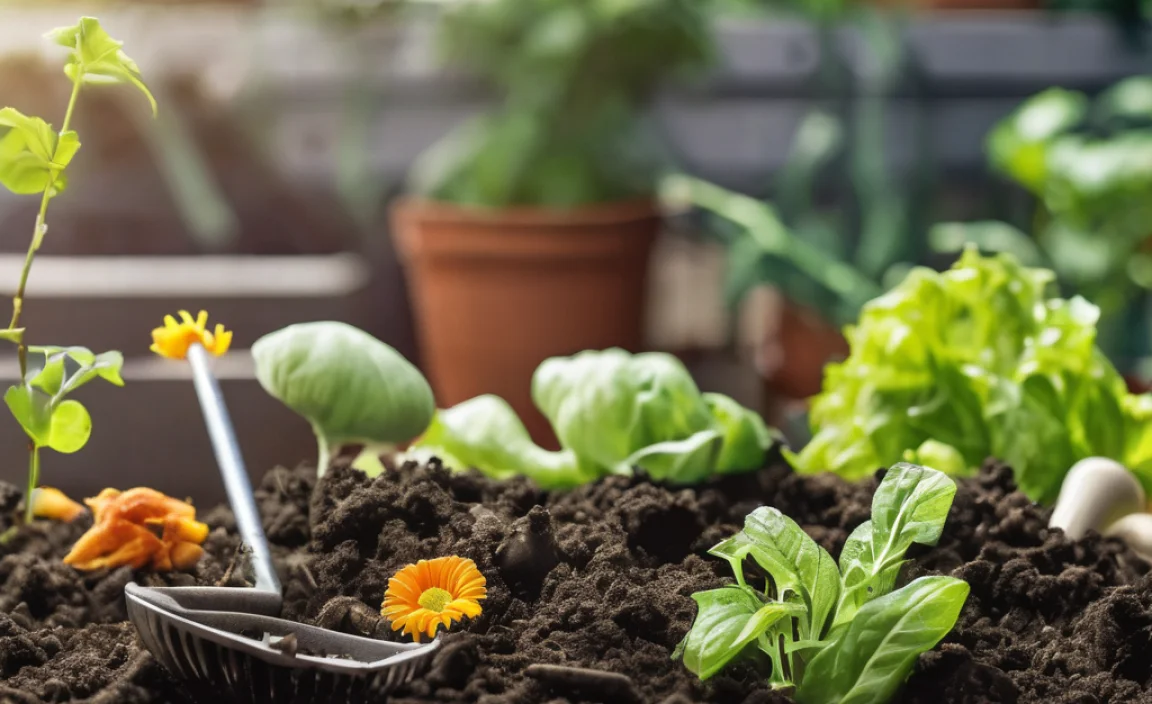
Composting is the cornerstone of a microbe-rich garden, and the best part? it’s virtually free! All you need is a place to collect your organic waste and a little patience.
What Can You Compost? (The Delicious Menu for Microbes)
Think of your compost bin as a restaurant for microbes. They love a varied diet! Here’s a breakdown of what to toss in:
“Greens” (Nitrogen-Rich Materials)
Fruit and vegetable scraps (peels, cores, rinds, wilted greens)
Coffee grounds and paper filters
Tea bags (remove any staples or plastic)
Grass clippings (in moderation, can get slimy if too much)
Plant trimmings (non-diseased)
“Browns” (Carbon-Rich Materials)
Dry leaves
Shredded newspaper and plain cardboard (avoid glossy or colored ink)
Straw and hay
Wood chips and sawdust (from untreated wood)
Eggshells (crushed)
What to Avoid:
Meat, fish, and dairy products (can attract pests and create odors)
Oily or greasy foods
Diseased plants
Weeds that have gone to seed (unless your compost gets very hot, which kills seeds)
Pet waste (from cats and dogs, can contain pathogens)
Chemically treated yard waste or wood
Setting Up Your Cheap Compost System
You don’t need a fancy composter to get started. Here are some budget-friendly options:
Simple Pile: The easiest and cheapest method. Just create a pile in a corner of your yard. Aim for a space that gets some sun but isn’t in direct, blazing sun all day. Turn it occasionally with a pitchfork.
DIY Pallet Bin: Get free wooden pallets from local businesses or construction sites. Stand them upright and fasten them together with screws or wire to create a three or four-sided enclosure. This keeps things tidy and contained.
Wire Mesh Bin: Use chicken wire or hardware cloth to create a cylinder. It’s simple, allows good airflow, and is very inexpensive.
Existing Container: An old trash can with holes drilled in the sides and bottom can also work as a small-scale composter.
The key is to allow for airflow, which is crucial for the microbes doing their work. Drilling holes or leaving gaps in your DIY bins is important.
The Recipe for Happy Microbes: Balancing Act
For your compost pile to hum with microbial activity, you need to provide them with the right conditions. This means a balance of “greens” and “browns,” moisture, and air.
Greens to Browns Ratio: A good starting point is about 2 parts “browns” to 1 part “greens” by volume. This might seem like a lot of browns, but they provide the carbon that fuels the microbes. Too many greens can lead to a slimy, smelly pile. Too many browns will slow down decomposition.
Moisture: Your compost should be as damp as a wrung-out sponge. If it’s too dry, microbial activity slows down. If it’s too wet, it can become anaerobic (lacking oxygen) and smelly. Add water if it’s dry, and add more brown materials if it’s too wet and soggy.
Aeration: Microbes need oxygen. Turning your compost pile every week or two with a pitchfork or compost aerator helps introduce air. If you have a bin with good airflow design, you might need to turn it less frequently.
Boosting Your Compost with “Free” Microbial Kickstarters
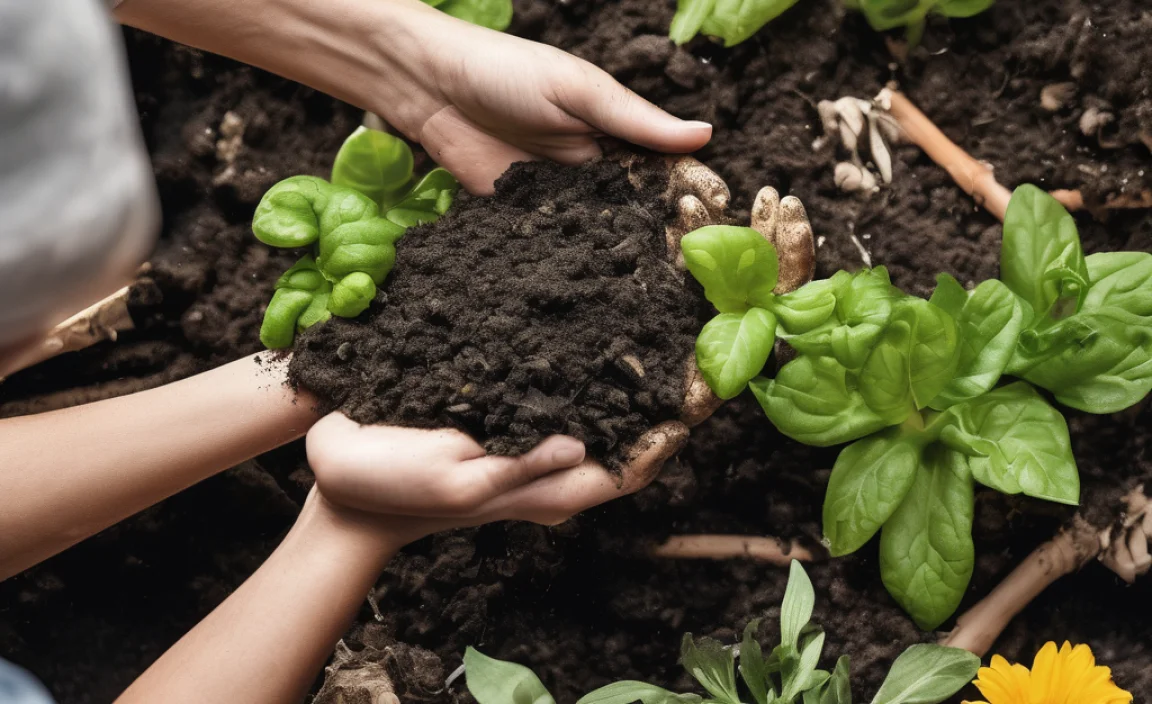
While your compost pile will naturally attract microbes, there are simple, free ways to give it an extra boost and speed up the process. These methods introduce a diverse range of beneficial microorganisms directly into your compost.
1. The “Soil Grab” Method
The easiest way to inoculate your compost with a diverse community of microbes is to simply add a shovel-full or two of finished compost from a healthy, established garden or even just healthy topsoil from an undisturbed area of your yard. This soil is teeming with bacteria, fungi, and other microorganisms.
How to do it:
When starting a new compost pile, mix in a shovel-full of existing compost or healthy topsoil.
If you don’t have any, check with a neighbor who gardens and has a healthy compost system. They might happily share a scoop!
This introduces a ready-made army of microbes and materials that will help kickstart decomposition. Think of it as giving your compost a head start with experienced workers.
2. “Compost Tea” – Liquid Gold for Your Garden
Compost tea is a liquid extract of compost that is packed with beneficial microbes. Making it is surprisingly simple and requires no special equipment beyond what you might already have.
What you’ll need:
A bucket (a 5-gallon bucket works well)
Saran wrap or a loose-fitting lid
A small amount of finished compost
Water (rainwater is best, or let tap water sit out for 24 hours to allow chlorine to dissipate)
How to make it:
Fill your bucket about one-third full with finished compost.
Top it up with water, leaving a few inches of space at the top.
Cover the bucket loosely with saran wrap or a lid (don’t seal it).
Let it sit in a warm, sunny spot for 24-48 hours, stirring it vigorously a couple of times a day. You should see some frothy bubbles forming – that’s a good sign of microbial activity!
Strain out the solid material (you can add this back to your compost pile).
Your compost tea is ready!
How to use it:
Watering: Dilute the compost tea with water (about 1:4 ratio of tea to water) and use it to water your plants at the base.
Foliar Feed: You can also spray diluted compost tea (use a finer sieve to avoid clogging sprayers) onto plant leaves for a quick nutrient and microbe boost.
This is a fantastic way to directly deliver microbes to your plants and soil, boosting their health and resilience.
3. Incorporating “Volunteers” into Your Compost
Sometimes, beneficial microorganisms travel on common household items. Don’t shy away from adding these to your compost:
Yogurt or Buttermilk: A dollop of plain yogurt or a splash of buttermilk can introduce beneficial bacteria.
Worms: If you have a worm bin (vermicomposting), adding some of the worm castings to your hot compost pile can introduce a wealth of beneficial microbes.
Muddy Boots: Resist the urge to wash off your muddy boots completely before putting them near your compost bin. A little bit of mud from a healthy garden environment can help inoculate your compost.
Remember, the goal is to introduce a diverse range of life. Avoid anything that smells off or looks moldy (unless it’s the beneficial white, fuzzy mold seen in healthy compost). For more on identifying healthy compost, you can explore resources from university extension offices, like those found on UMass Extension.
Why This “Cheap” Method Outperforms Expensive Alternatives
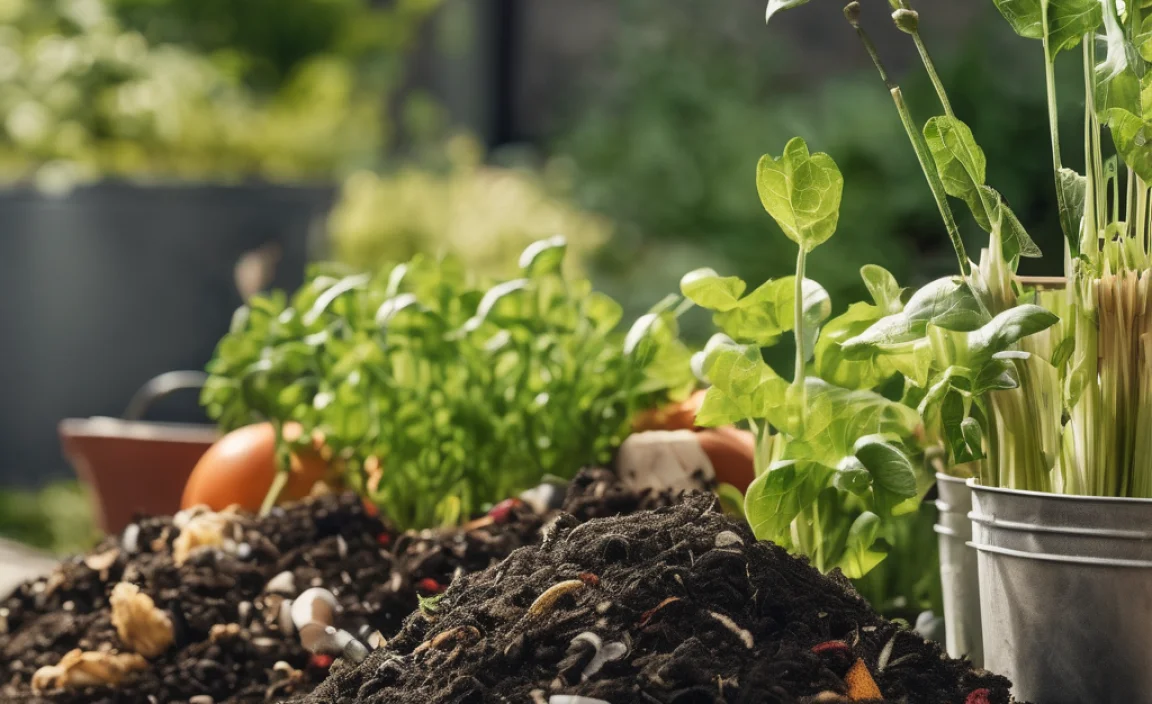
You might be wondering why this simple, low-cost approach is so effective. It comes down to nature’s design and long-term soil health.
Fostering a Natural Ecosystem
Expensive synthetic fertilizers often provide plants with readily available nutrients that bypass the need for microbial activity. While this can lead to quick green growth, it doesn’t build healthy soil. Over time, this can make plants dependent on these artificial inputs. By using compost microbes, you’re nurturing a self-sustaining soil ecosystem. The microbes break down organic matter, release nutrients slowly and steadily, improve soil structure, and protect plants.
Cost-Effectiveness You Can’t Beat
Let’s talk numbers. Compared to bags of fertilizer that can cost $20-$50 or more, or specialized microbial inoculants that can be even pricier, composting costs almost nothing. Your “inputs” are kitchen scraps and yard waste that you would otherwise discard. The “labor” is turning the pile, which is good exercise!
Environmental Benefits
Reducing waste by composting is great for the environment. Landfills are full of organic materials that release methane, a potent greenhouse gas, as they decompose anaerobically. Composting diverts this waste and turns it into a valuable soil amendment. Furthermore, a healthy soil ecosystem sequesters carbon, helping to combat climate change.
Long-Term Soil Health
The real magic of compost microbes lies in their ability to build soil health over time. As you continue to compost and add it to your garden, your soil becomes richer, darker, more absorbent, and more alive. This creates a resilient foundation for your plants, reducing the need for constant intervention and boosting your garden’s productivity season after season.
Troubleshooting Your Microbe Hotspot
Even the best-laid plans can hit a snag. Here are some common compost puzzles and how to solve them:
My Compost is Smelly (Rotten Egg or Ammonia Smell)
Cause: Too much “greens” or too wet, leading to anaerobic conditions.
Solution: Add more “browns” (like shredded cardboard, dry leaves, or sawdust) to absorb excess moisture and create air pockets. Turn the pile thoroughly to introduce oxygen.
My Compost Isn’t Heating Up or Decomposing
Cause: Too dry, not enough “greens,” or not enough volume to build heat.
Solution: Add water until it’s like a wrung-out sponge. Add more “green” materials (kitchen scraps, grass clippings). If the pile is too small, try to build it up to at least 3x3x3 feet to effectively generate heat.
My Compost Pile is Attracting Pests (Rodents, Flies)
Cause: Exposed food scraps, improper materials being added.
Solution: Ensure you’re burying fresh kitchen scraps deep within the pile, covering them with a layer of brown material. Avoid adding meat, dairy, and oily foods. If using an open pile, consider a DIY bin with finer mesh to deter rodents. For quick decomposition and heat that deters pests, maintaining the right balance and turning can help.
Using Your Finished “Microbe Gold” in the Garden
Once your compost is dark, crumbly, and smells earthy, it’s ready to work its magic! This finished compost is packed with beneficial microbes ready to enhance your garden soil.
When is Compost Ready?
Finished compost will:
Look dark brown and uniform, like rich earth.
Be crumbly in texture.
Smell pleasant and earthy, not sour or rotten.
You shouldn’t be able to identify the original materials (except perhaps very tough items like avocado pits or large eggshells).
This process can take anywhere from a few months to a year, depending on your method, climate, and how often you turn it.
Ways to Apply Compost to Your Garden
There are many ways to incorporate your homemade microbial powerhouse:
Top Dressing: Spread a 1-3 inch layer of compost around the base of plants, shrubs, and trees. Let it sit on top, and rain and earthworms will work it into the soil.
Mixing into Beds: When preparing new garden beds or for planting, mix compost into the top 6-8 inches of soil. A common recommendation is to add about 25-30% compost to your existing soil. For example, if you’re turning over a 4-inch layer of soil, mix in about 1-2 inches of compost.
Around Seedlings: Place a small handful of compost around young seedlings to give them a strong start immediately after planting.
In Planting Holes: Add a scoop of compost to the bottom of planting holes when transplanting vegetables, flowers, or shrubs.

I am passionate about home engineering. I specialize in designing, installing, and maintaining heating, ventilation, and air conditioning systems. My goal is to help people stay comfortable in their homes all year long.

